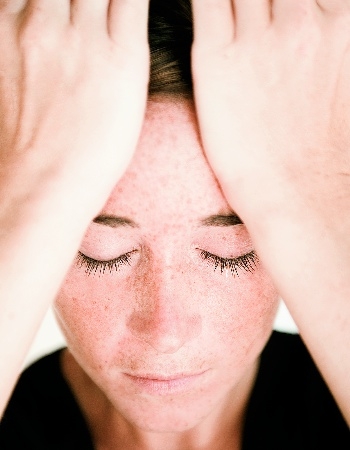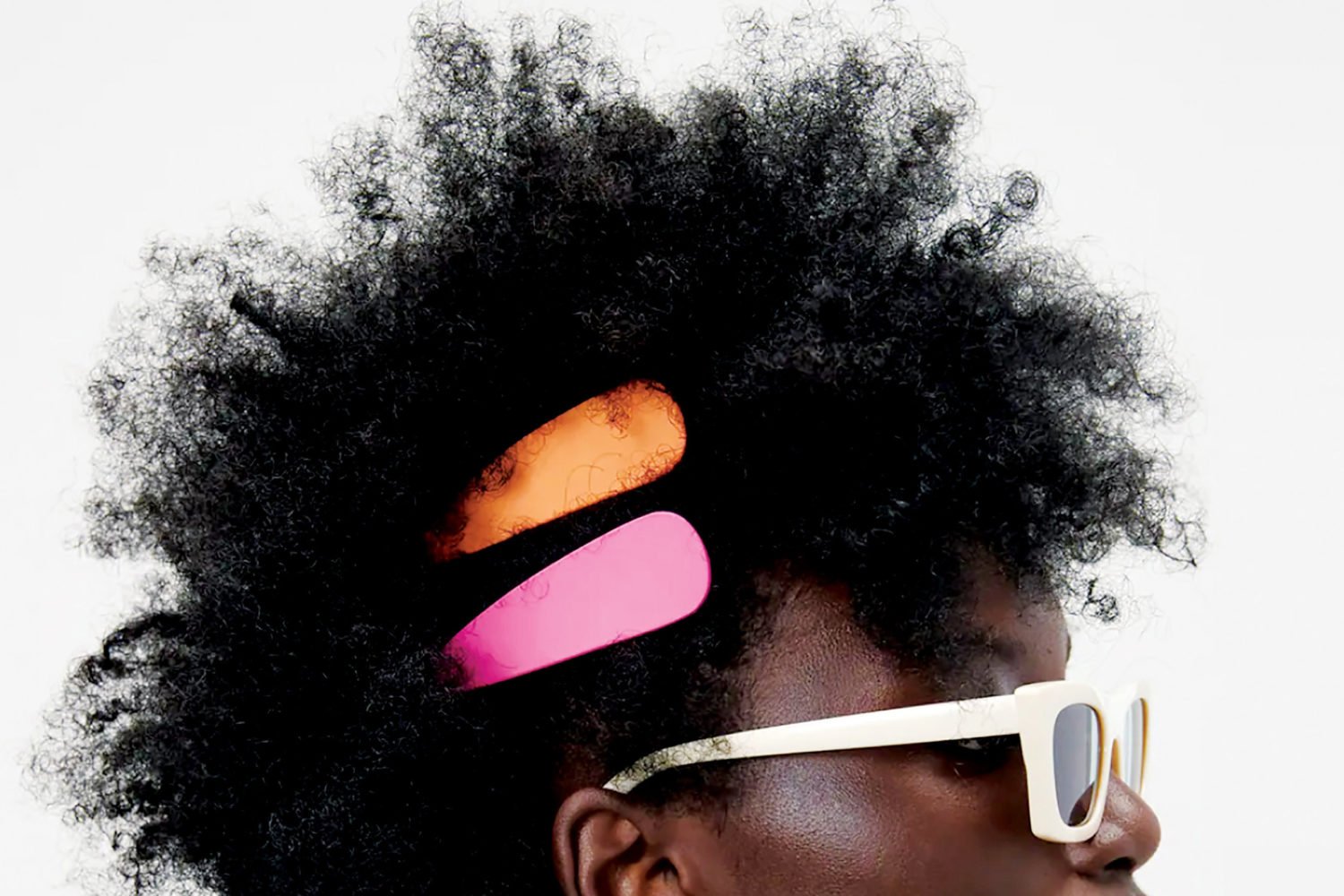
Washington prizes great minds working at peak performance, so it’s fitting that research hubs, universities, and top neurologists here are devoted to the study of migraines. Scientists have learned a lot about migraines in the last decade through neuroimaging and research—coming a long way from when some believed the pain was just in a patient’s mind.
Amy Stone, a physician with the Neurology Center of Fairfax, says the history of migraine research is riddled with error. “Patients in their thirties and forties talk about their mom with sick headaches in her room,” she says. “Then in the ’60s and ’70s, we got a lot of marketing that said we all had sinus headaches.” Even today mysteries persist.
Scientists now believe a migraine isn’t actually the brain feeling pain but rather pain from nerve fibers and blood vessels that surround the brain. The pain is caused when blood vessels become inflamed.
The throbbing can be on one side of the head or both. It can start out moderately and get worse, come and go, or become a chronic everyday illness. Some experience an “aura” right before and during a migraine—zigzag lines, shimmering spots or stars, blind spots, flashes of light, or stroke-like symptoms such as temporarily losing the use of an arm or trouble finding words. A migraine can also include nausea and sensitivity to light and sound.
Migraines can run in families. “There is a genetic predisposition,” says Linda Porter, a program director at the National Institute of Neurological Disorders and Stroke. “If your mother had them, you may, too.”
About 18 percent of American women and 6 percent of men get migraines, according to the Migraine Research Foundation. Of those, 4 percent have chronic headaches, defined as at least 15 migraines a month. Boys suffer from migraines more often than girls until they hit puberty, after which girls experience more migraines than boys. This statistic leads scientists to believe that fluctuating hormones, such as estrogens, are a trigger.
But hormones aren’t the only things that can set off a migraine—other factors include changes in the weather, perfume, chemicals, lack of sleep, depression, some medications, fluorescent lights, and certain foods and additives such as MSG, chocolate, and caffeine.
“It’s about half genetics and half environmental,” says Richard Lipton, a professor of neurology at the Albert Einstein College of Medicine in New York City and one of the country’s leading migraine specialists.
Some patients with particularly nagging migraines search years for what triggers the pain, keeping migraine diaries and seeing specialists ranging from chiropractors to neurologists. They try new methods of treatment and lifestyle modifications until something works.
The good news is that there are more options for relief than there were in the past. “Treatment has been completely revolutionized,” Dr. Lipton says. “There are new classes of medications I never dreamed of when I started 25 years ago.”
FIRST-STEP MEDICATIONS
For mild to moderate migraines, doctors mostly recommend painkillers such as ibuprofen, acetaminophen, and aspirin. If those drugs don’t help, doctors may prescribe triptans, which are designed to constrict and stabilize inflamed and swollen blood vessels. They also can relieve nausea.
Triptans come in a variety of forms, and they sound like post-Soviet states: sumatriptan, naratriptan, rizatriptan, zolmitriptan, to name a few. These medications aren’t recommended for people with heart problems and should be taken only a few times a month, as taking them more often can cause painful swelling of the blood vessels, leading to rebound headaches. Other side effects are nausea, dizziness, and pressure in the chest. If patients don’t respond to triptans, doctors may try narcotics such as codeine and oxycodone, though those medications can be addictive.
Some drugs come in an inhaler or a device that looks like a pen and that injects the medication into the body. Down the road, drugs without the side effects of triptans will be administered in a patch, says Dr. Jessica Ailani, director of the Georgetown Headache Center. Those medications are currently awaiting FDA approval.
DAILY DRUGS
Scientists don’t know why some acute migraines turn into chronic ones, but when that happens they may prescribe a daily preventive medication. Many of these drugs treat other ailments and were discovered to help migraine sufferers as a side benefit. Why they work for headaches is still mostly unclear.
Drugs that counter high blood pressure and some coronary diseases are known as beta-blockers, and they often take the edge off a migraine. They include nadolol, propanolo, verapamil, lisinopril, and candesartan. There can be side effects of dizziness and sleepiness.
Doctors sometimes give antidepressants and anticonvulsants to migraine patients who aren’t depressed or don’t have seizures. The drugs can lessen certain chemicals in the brain, such as serotonin, which can cause blood vessels to swell and in turn kick off a migraine. Examples of these drugs include nortriptyline, amitriptyline, protriptyline, topiramate, divalproex, and gabapentin. Side effects can be dry mouth, constipation, blurred vision, and sleepiness.
Next: Injections, lasers, and diet tricks
WRINKLE-FREE INJECTIONS
This past fall, the FDA approved the use of botulinum-toxin type A—a.k.a. Botox—for chronic migraines after testing it in 1,400 patients in North America and Europe. “The data is pretty clear,” says Amy Stone of the Neurology Center in Fairfax. “Botox gets better and better over time. After six months, some patients who had 20 headache days a month are down to eight or nine.”
Much in the way it smooths wrinkles temporarily, Botox freezes muscles in the head and interrupts pain messages sent to the brain, scientists believe. Botox is injected into a patient’s forehead, temples, neck, and shoulders. When it works, treatment is repeated every three months. Some patients get a pain where the injection is inserted or a residual headache, which usually goes away after a day.
Botox has been used unofficially for about ten years to treat some kinds of migraines, “but now the use is based on better scientific studies,” Ailani says. “It is no longer experimental.”
And the wrinkles in your forehead? Botox injections for migraines are higher on the forehead than they are for cosmetic purposes, Stone says, so they probably won’t affect your appearance.
COLD-LASER TREATMENT
Trained as an anesthesiologist, Bernard Filner treats migraine patients at his Pain Center in Rockville with a non-heating, low-power laser that looks like a space-age flashlight. Using his knowledge of disarming trigger points in the body as an anesthesiologist does, Dr. Filner places the laser over a trigger point for one to three minutes to make the pain go away. Patients may need multiple treatments. Some chiropractors use this method as well, though it’s not common practice among neurologists.
“It is a low-to-no-risk treatment,” says the Einstein College of Medicine’s Richard Lipton. “My take on cold laser is I’d love to see some good studies on how it works. In the meantime, why not?”
THE DO'S-AND-DON'TS DIET
David Buchholz, a neurologist at Johns Hopkins, takes a three-pronged approach to migraines. First, he tells patients to get off any over-the-counter meds such as Excedrin, because it has caffeine, and any decongestants. “They may help in the short run by constricting blood vessels,” Dr. Buchholz says, but they can cause rebound headaches.
Step two: “Do what you can to reduce triggers,” he says. You can’t do much about the weather or hormonal cycles, but you can cut out trigger foods. Caffeine is the number-one culprit, according to Buchholz, followed by chocolate, red wine, MSG (found in more than just Chinese food), citrus fruits, and bananas.
Step three, his last resort: Use preventive medications such as beta-blockers, antidepressants, or anticonvulsants.
This method of cutting out foods is not without controversy. “If you eliminate 50 things from your diet and only five bothered you, how are you going to know what the triggers are?” Dr. Ailani says. She suggests a less radical approach: keeping a diary to try to pinpoint what foods might cause a migraine.
Doctors also stress the importance of getting enough sleep, exercising, keeping your weight down and your blood pressure in check, and getting off over-the-counter medications.
WHEN ALL ELSE FAILS
Doctors try to rule out other causes of head pain when first seeing a patient. They may look for tumors, infections, and cluster headaches—which, as the name suggests, come in clumps and disappear only to return in another batch. The pain from these can be severe and often occurs near one eye.
Some patients don’t find relief despite trying different approaches. “Thirty percent of chronic migraine patients just don’t respond to treatments,” Ailani says. “Headaches aren’t curable. You can treat them, but you can’t make them go away.”
Some patients simply outlive the pain. When people age, estrogen levels stabilize, especially in women. “Estrogen drops before your period; it’s that drop in estrogen that we think triggers migraines,” Ailani says. “During menopause, estrogen levels become stable, so 70 percent of women stop having migraines.” Migraines also typically stop during pregnancy.
Birth-control pills regulate estrogen as well and can lessen the onset of migraines. “The problem is that for some patients oral contraceptives worsen headaches,” Ailani says. “I always advise patients to pay attention to the frequency of their headaches while on oral contraception. If the headaches worsen, they should consider changing to a different formulation or stopping altogether.”
In difficult-to-treat cases, doctors may probe beyond the physical symptoms and ask about depression. “There is a lot of connection with migraines and anxiety, depression, and bipolar conditions,” says Dr. Suzan Khoromi, a neurologist at George Washington University Hospital, which will open a center devoted to headaches in a few months. “A migraine has a biological dimension, a psychological dimension, and a physical dimension. The most beneficial treatments are those that offer coping mechanisms for all three.”
This article appears in the June 2011 issue of The Washingtonian.
Subscribe to Washingtonian
Follow Washingtonian on Twitter
More >> Health | Top Doctors | Well+Being Blog

















